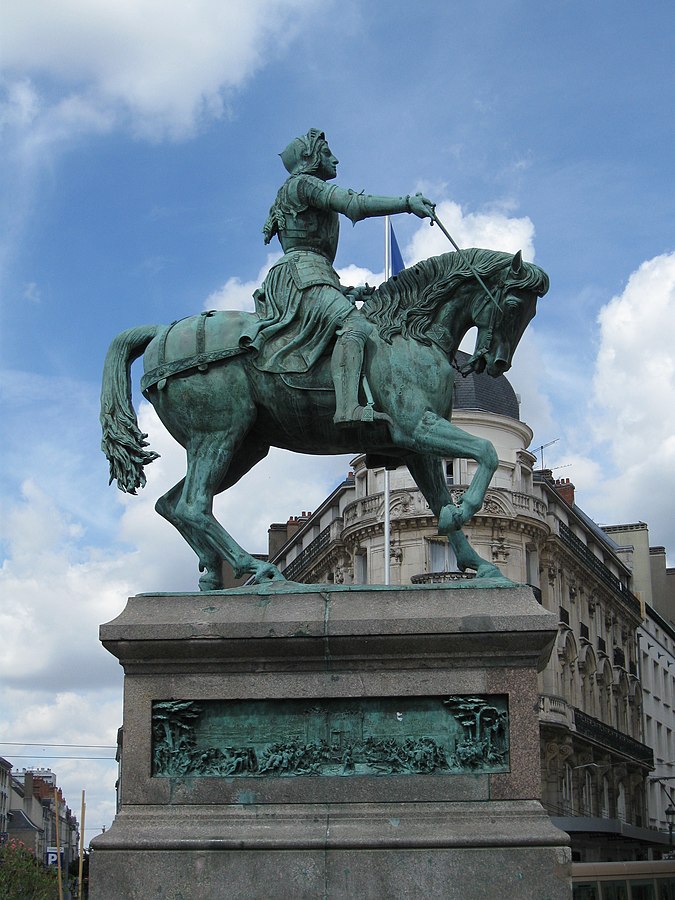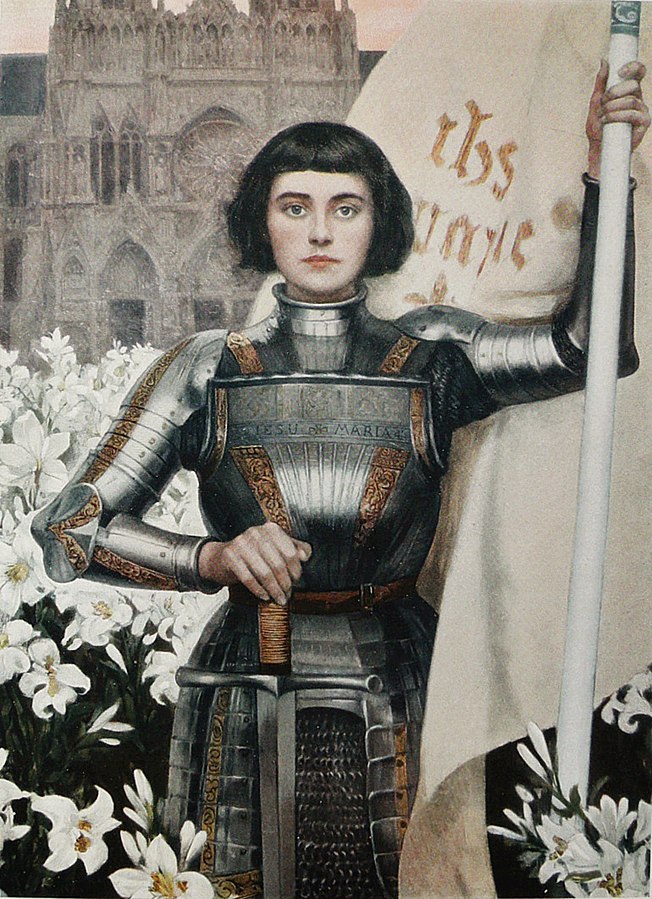Joan d’Arc (known in French as Jeanne d’Arc), arguably the most famous French woman ever, was a peasant in mid-15th century France who claimed to carry the will of God in crowning the dauphin (heir) of France, Charles, and expelling the English invaders from the kingdom. Even though she was eventually captured and executed by the English, the belief that she was truly a messenger of God, and her inspiring presence leading the troops made a turning point for France’s fortunes in the Hundred Years’ War. God-given or not, her courage and piety made her into a symbol of French virtues, and gained her the status of saint in 1920. How did this amazing story come to be? Keep reading below:
1# The Hundred Years’ War
To understand Joan d’Arc, one must have a clear grasp of of 15th century France. Both France and England had been at each other’s throats of late, for England’s royal Plantagenet dynasty hungered for the French throne ever since Charles IV of France had died without a male heir. Isabella, Queen of England and mother of Edward III, had first claimed the throne for her son; in turn the new French kings of the House of Valois, retaliated by claiming the English-controlled Duchy of Aquitaine (or Gascony). Kicking off in 1337, the Hundred Years’ War saw a myriad of stages and truces, and by the time of Joan’s birth in 1412, it entered its last and decisive phase.
A major English victory at Azincourt in 1415, coupled with the mental illness of Charles VI of France, and the subsequent civil war between Armagnacs and Burgundians for the regency, had opened the kingdom’s gates for the English to throng in. With Normandy and Gascony under their thumb, their rising star shone brighter than ever thanks to an alliance with Burgundy. The assassination of the Duke of Burgundy, John the Fearless, by supporters of the Dauphin Charles (future Charles VII) had thrown John’s son, Philip, into English arms. Burgundy henceforth, supported the claims of Henry VI, the king-boy of England, to the French throne; while the Armagnac supporters fought for the Dauphin.
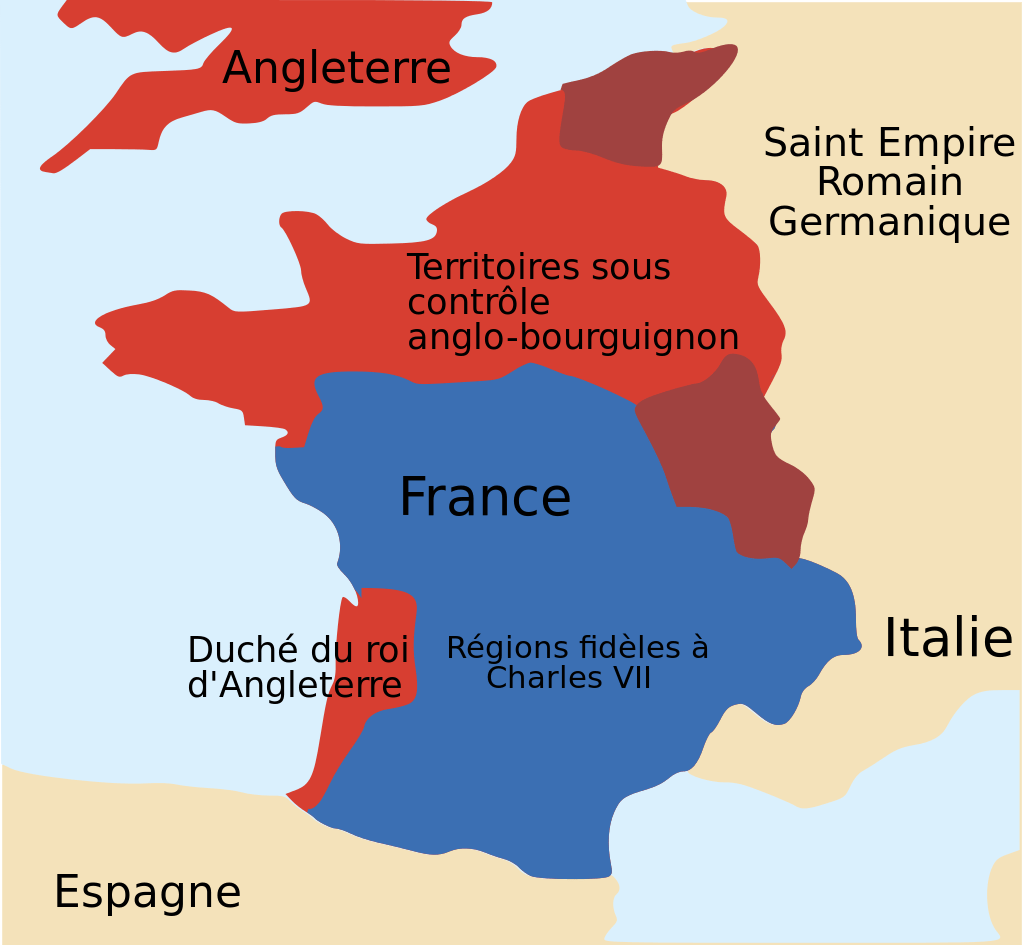
2# Origins. The call of God
The devastation caused by soldiers from both sides had become a familiar sight for Joan and her native village of Domrémy, which was in Armagnac territory but lay surrounded by Burgundian lands. Joan’s parents, Jacques d’Arc and Isabelle Romée, were a well-to-do peasant couple. As a child, Jeann, or Jeannete, as her fellow villagers remembered her, was hard-working, dutiful, and pious. Her devotion was remarkable already, and when she turned thirteen, she claimed to have heard voices for the first time. Those, she said, were Saint Michael, Saint Catherine, and Saint Margaret, who had revealed it was God’s will that Dauphin Charles become King of France, and that she was to led him to Reims for his coronation, and then she would free France from the English yoke.
In 1428, aged sixteen, she set off to find the Dauphin and fulfill her divine-issued mission. She cut her hair short and dressed as a man, in order to pass unimpeded through hostile Burgundian lands on her way to Chinon, where the Armagnac court. Although she persisted and managed to secure an interview with the Dauphin, and despite the overt sympathies towards the cause she claimed, her trustworthiness had to be verified. Beyond confirming her virginity, the veracity of her visions couldn’t be proved, but when Joan boldly stated she would relieve Orléans of the English siege, the Dauphin’s advisors saw a chance to put her to the test.
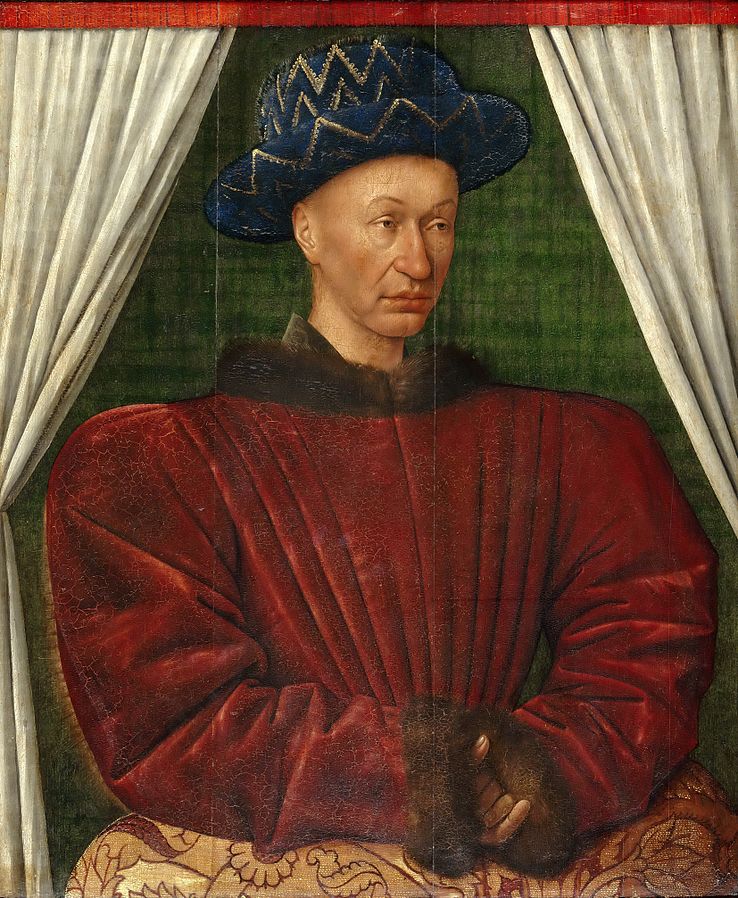
3# The Maid of Orléans
Sitting astride on the river Loire, Orléans was the key to Armagnac-controlled France. Its fall might have signalled their end, but Joan’s presence arrival immediately galvanised garrison and citizens. Illiterate as she was, she dictated a presumptuous letter asking the English to leave or to be expelled by force of arms, and clad in armor and riding a horse with surprising expertise, she personally led the assault to several key English fortifications around the city. Most decisive was the capture of Les Tourelles, an outwork blocking the only bridge that led to the city from the south bank.

When Joan was wounded by an arrow between neck and shoulder, the Frenchmen under the overall command of Jean, the Bastard of Orléans, were demoralised and starting the retreat. It was then that Joan’s legend begun to take shape, when pushing through the pain, she rallied the men under her banner emblazoned with the words JHESUS MARIA, and charged under heavy English fire towards the ditch. Such was the strength of her conviction, of her belief that she was truly God-sent, that the men around her begun to believe themselves. Les Tourelles was taken that day thanks to her, and with the south bank secure in Armagnac hands, Orléans could now be supplied indefinitely. The English packed their things and left. The city was saved. For her actions, Joan was nicknamed the Maid of Orléans (La Pucelle d’Orléans).
4# Coronation
The miracle had happened, the miracle that proved―at least from the point of view of an Armagnac―that the Maid had spoken the truth. But more impressive than lifting the siege in just four days, was that she had found French morale at rock bottom, and lifted it to the sky. A kingdom on the verge of defeat on the eve of her visit to the Dauphin, now collected a streak of impressive wins, most notably that of the Battle of Patay. In all of them Joan led from the front, never taking a life herself, but putting herself under English fire to whip up the French soldiers into a frenzy, bellowing that God was with them.
It was time to complete the first part of her mission: the coronation of Charles in Reims, which held the sacred oil of Clovis necessary to anoint a French monarch. Although Reims remained in Burgundian territory, Joan convinced Charles to abandon the security of Chinon and travel there with the army. Their sure-footed advance met with little resistance, and Reims offered capitulation without a fight. Finally, on Sunday 17th July 1429, Charles VII was consecrated as King of France, with Joan d’Arc standing at his side. The obscure peasant teenager who had popped in his court to swear she would see him crowned, had delivered.
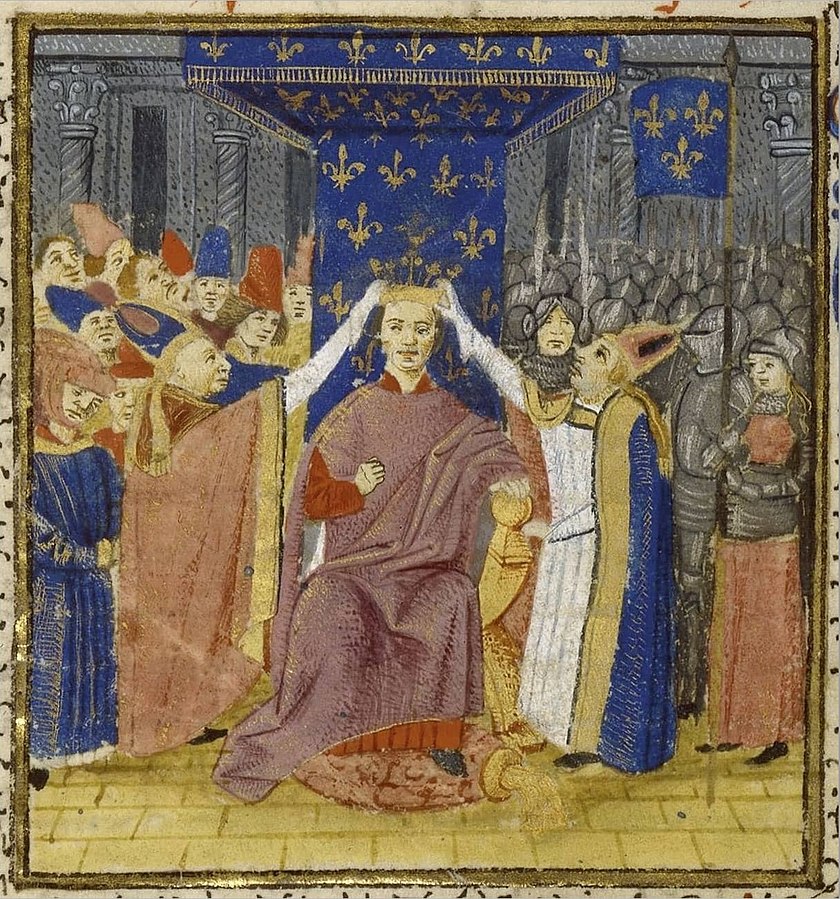
5# The capture of Joan d’Arc
Now only one task was left: to throw the English back to the sea that had vomited them. A swift end of the war loomed tantalizingly close when Philip, Duke of Burgundy, signed a truce with Charles VII. Unfortunately, this promising beginning wasn’t followed up, and Charles’ lieutenants―Joan amongst them―procedeed to lay siege to Paris, held by the Burgundian-English alliance for over a decade. The miracle of Orléans couldn’t be repeated this time, and Joan was badly wounded during the failed assault on September 8th. This temporary setback was enough to discourage Charles from another go at his capital, but more important, was that Joan’s good standing with God was put into doubt in the monarch’s mind.
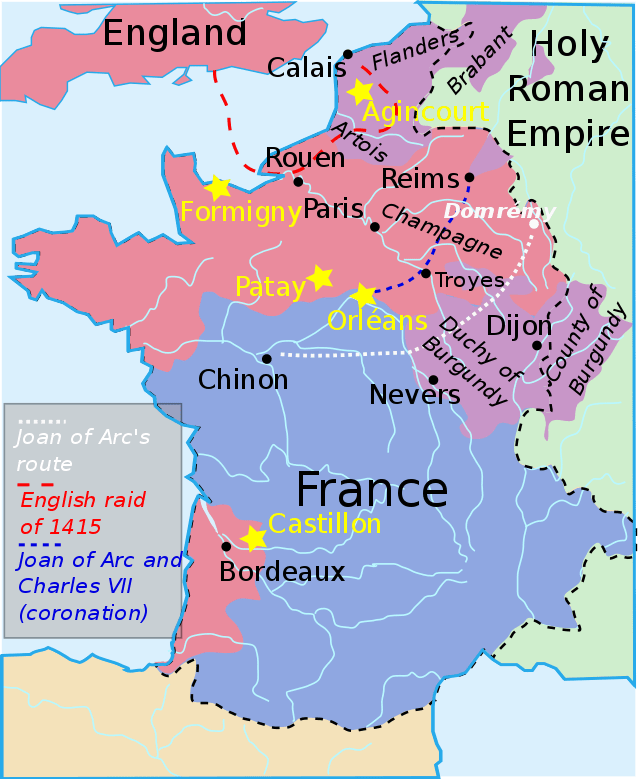
Much to her chargrin, she was next sent to deal with Perrinet Gressart, an infamous mercenary in payroll of the English-Burgundian side. Entirely ignorant of military or economic issues, she couldn’t understand why they were wasting time with petty mercenaries when God had so clearly spoken his will. Although Charles VII ennobled her and her family on her return, it was clear that her political usefulness was nearly spent. Or was it not?
Following the end of yet another truce with Burgundy on May 1430, Joan was finally given green light to regain the initiative by relieving Compiègne from a Burgundian siege. Clearly, she had proven herself adept at such battles in the past, and with the help of God, Joan truly believed she could achieve anything. On May 23rd she led a force upon the Burgundian camp northeast of Compiègne, but it turned out to be a trap. Surrounded and locked out of Compiègne’s safe walls, Joan was unsaddled and captured. The Whore of Armagnac, as the English besmirched her, had finally been aprehended.
6# Execution. Burning at the stake
Joan didn’t meekly accept her new status as prisoner and attempted to escape twice, nearly killing herself when she jumped out from the window of her tower at Beaurevoir. Meanwhile, Burgundians and English haggled over her, with the result that the latter paid the former for the custody, only to immediately hand her over to the Church. Or at least, to those in the Church sympathethic to English interests and claim to the French crown, notably Bishop Cauchon. After seven months spent as captive, Joan was finally transported to Rouen, Normandy, capital of English France, where she was to be tried for heresy.
Months of interrogation by Cauchon and a team of clerics and theological experts from the University of Paris, ensued. The gravest accussations were that Joan dressed as a man in contravention to the Old Testament, and of spreading falsehoods contrary to the truths of the Catholic Church. That the Armagnac theologians and clerics had discovered no heresy or blasphemy in Joan’s words and behaviour, back when they interrogated in 1429, served to demonstrate that the trial was motivated entirely by politics. Joan supported Charles VII, and therefore was an enemy of Henry VI, the king-boy of England and English-held France.
Pressure mounted. Meticulous clerics versated in the art of interrogation relentlessly questioned her, incessantly probing and forcing her to recount the facts over and over again, in an attempt to expose contradictions in her tale. She was even threatened with torture but held steadfast. Inevitably though, Cauchon and his cronies obtained the evidence they needed, and sentenced her to burn in the fire of Earth, and her soul to perish in the fires of Hell. This was more than a sick, thinned, and terrified ninteeen-year-old girl could resist. She readily confessed the charges and agreed to live isolated and in penitence for the rest of her life. And who could blame her? Such trials could and had broken wiser and more experienced people than her.
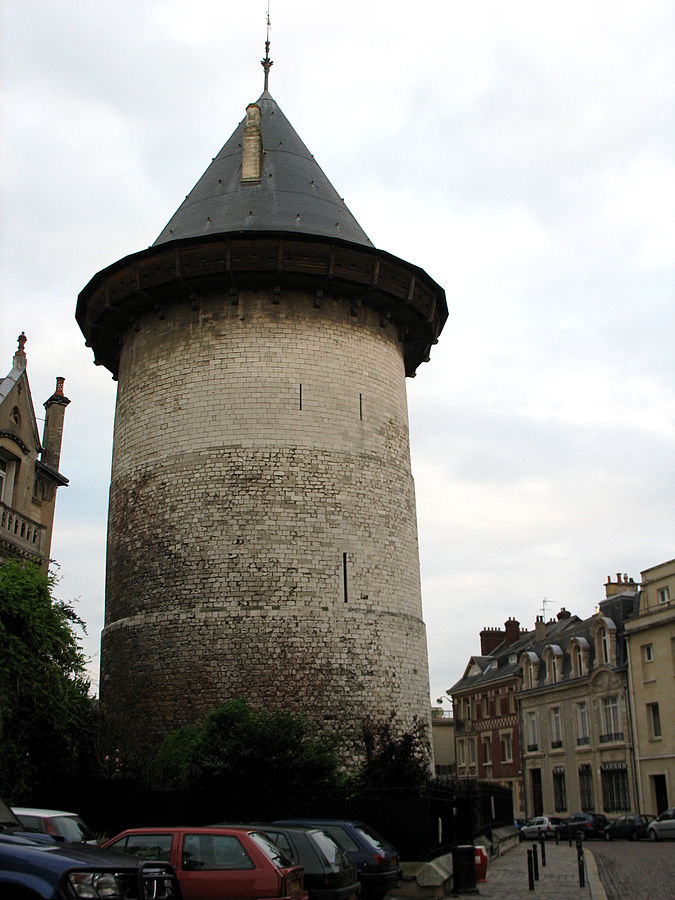
If Bishop Cauchon or his English benefactors had preferred a rather fiery ending, they weren’t dissapointed at the end. A few days later, on May 28, Joan recanted her submission, doning her man’s clothes once again and declaring that she had agreed to submit only for fear of the fire. According to Church and secular law, a relapsed heretic had forfeited salvation both in heaven and on Earth. Since the Church couldn’t take a life (but could ‘ask’ others to do so) she was returned to the English, who burnt her on the stake at the market square in Rouen, May 30th 1430.
“Jesus, Jesus, Jesus” she repeated for all the present to hear, as the flames consumed her.
7# Aftermath
Although the English had vanquished their sworn enemy, the damage she had done to them was irreversible. Joan had changed the tide of the war for good. In 1435, Philip, Duke of Burgundy, deserted the English to join Charles VII, Norman towns were retaken by Charles’ troops one by one. Paris surrendered in 1437, and by 1453 only Calais remained in English hands. The Hundred Years’ War was over. Two posterior investigations condoned by Charles VII investigated the trial of Joan, and by 1456 the sentence was officially overturned by the Church. Twenty-six years after her execution, the trial was nullified and her memory and soul rehabilitated.
Joan never married or had descendants but her fame was to endure and outlive the rest of players of the war. In Orléans, the city she had saved, she is remembered as a hero, and her deeds there are commemorated to this day. She was also conveniently invoked as a symbol of French monarchy and their divine right to rule, as well as, a personification of national identity and untiy. Her fame suffered a brief setback during the French Revolution, due to her obvious associations with monarchy and religion, but recovered under the rule of Napoleon and was ultimately consolidated when she was canonised by the Roman Catholic Church in 1920. Only two years later, she was declared a seconday patron saint of France. Not too bad for an iliterate peasant girl who had rescued France and its king in their hour of greatest need.
